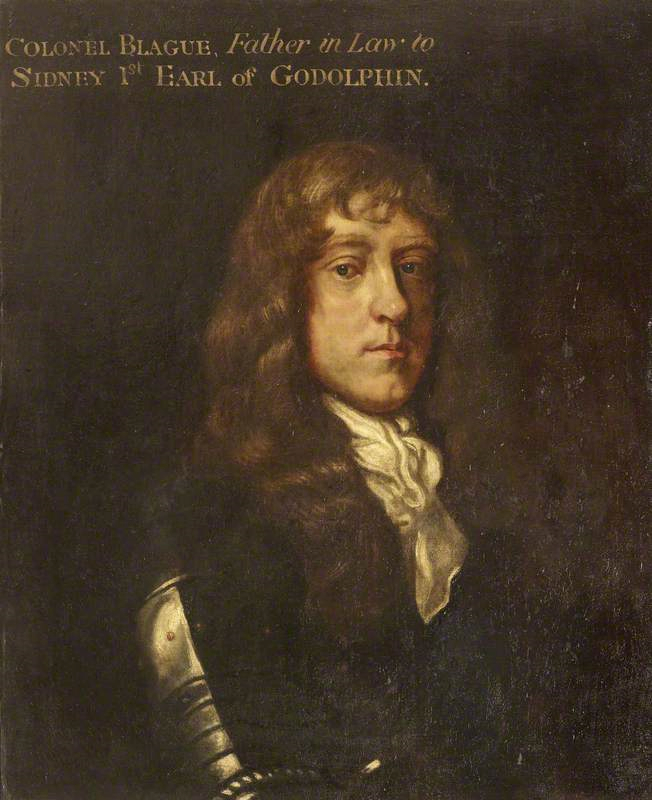Further reinforcements for the royalist cause, this time in the shape of Colonel Thomas Blagge's Regiment of Foote...
Blagge is yet another of those "unknowns" from the period, who turn out to be larger than life, and extraordinary, when you start to do research on them and the regiment(s) that bear their names..
The splendidly named Thomas Blagge (that's him, left) came from Horningsheath
in Suffolk, and was about as Royalist as it is humanly possible to be. He was
a Groom of the Chamber to Charles I (possibly Groom of the Stool, and that was
a role I had not heard of before!
 ).
).
From 1642 he was the Governor of Wallingford Castle (south east of Oxford,
about half way between Oxford and Reading as the crow flies), and in 1646 he
was the last to surrender a major English stronghold, following a siege of the
castle by Sir Thomas Fairfax. Even then he refused to surrender the castle
until he had the express permission of Charles I to do so!
He survived the war, and not surprisingly was also a strong supporter of Charles II, he was variously imprisoned (while living in England) and exiled, and he fought at the battle of Worcester in 1651, and upon the Restoration was given a commission of Colonel in the Guards and made Governor of Yarmouth - sadly he died 6 months after Charles II regained the throne.. what a character!
At Edgehill the regiment were part of John Belayses Brigade (along with Belayses own regiment and Pennnyman's) and were in the centre of the second line of Royalist infantry, and according to Young* and Scott/Gruber/von Arni at least were about 700 strong making them the strongest regiment in the brigade. During the battle the brigade and regiment were part of the general Royalist foot advance, and the brigades on the second line came up and filled the gaps between the brigades in the front row. Blagge's therefore ended up towards the right of the line. Like most of the Royalist infantry they aquited themselves well..
As for the regiments appearanced - little is known about either standards or uniform colours, the very excellent BCW site (see further reading list below) indicates that their flag may have been black (though that could just as easily have been the standard of the other regiment they shared garrison duties with at Wallingford) it also indicates that both regiments got an issue of uniforms while they were in garrison, but as that was two or three months after Edgehill it doesn't help us to identify what they wore at the battle.. as is the case with much of this period of the war then I went with the accepted argument that "they probably wore mostly civilian clothes" and I went with the plain cross of St George for an ensign - I liked the look of it, and it gives the impression of a hastily raised regiment..!
So mostly grey's and shades of brown for the uniforms, apart from the command figure who I have chosen to represent as the regiments Lieutenant Colonel, Sir William Lower [clicky], a noted dramatist, who his own cousin described as "an ill poet, and a worse man."
In my minds eye at least, he would have favoured the colourful clothing I have attired him in here.. and it gave me a good excuse to trot out the glorious purple again! 
By the end of the first of the three English Civil wars they were very definitely veterans, after Edgehill they fought at Turnham Green/Brentford, both Newbury battles, Cropredy, Lostwithiel, and a detachment were at the relief of the siege of Basing House.
They were disbanded in 1646.
Figures are 15mm - Peter Pig - painted in December 2020.
- http://www.earlrivers.org.uk/regimental-history/wallingford-castle
- http://wiki.bcw-project.org/royalist/foot-regiments/thomas-blagge
- https://www.westminster-abbey.org/abbey-commemorations/commemorations/thomas-blagge
- http://wiki.bcw-project.org/royalist/foot-regiments/thomas-blagge
- Peter Young - "Edgehill 1642"











